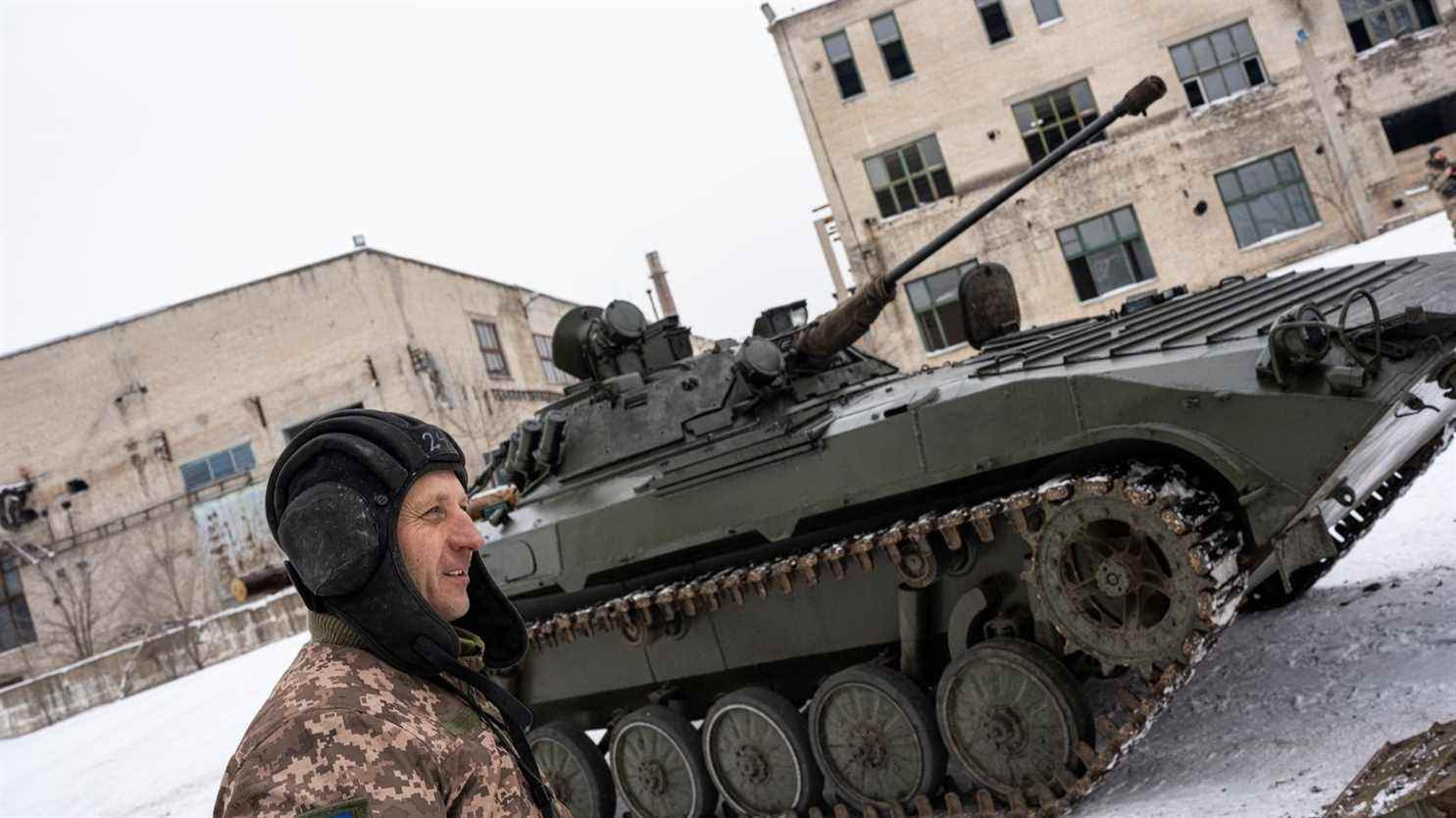It’s time for diplomacy. French, German, Russian and Ukrainian advisers met in Paris on Wednesday January 26 to find a way out of the crisis between Moscow and Kiev. Meanwhile, on the ground, soldiers are mobilized.
The Kremlin is accused of sending tens of thousands of troops to the Ukrainian border and Washington expects Russia to be able to do “use of military force” against Ukraine in one way or another, “may be” by mid-February, according to US Deputy Secretary of State Wendy Sherman. For its part, NATO has strengthened its presence in the region since Russia annexed Crimea. This is, moreover, one of the sensitive points of Moscow, which is calling for the freezing of enlargementOrganization of the North Atlantic Treaty in Europe, with in the first place the rejection of Ukraine’s membership.
Franceinfo helps you locate, on this map, the positions of the various stakeholders in the field.

Russian troops on the border and in Belarus
While eastern Ukraine has been experiencing a latent conflict since 2014, on the other side of the border, the Russian army is strengthening its positions. This unprecedented deployment of force has been documented for several months, in particular thanks to the analysis of dozens of amateur or satellite images. Artillery, armored vehicles, tanks, tank trucks… Dozens of rail convoys are observed. Equipment that reinforces existing or newly established Russian bases, as shown on our map.
Last December, American intelligence services estimated that 100,000 Russian soldiers had gathered near the border and in Crimea. According to a monitoring carried out by Rochan Consulting, a company of analysis in the military field, there are 17 permanent Russian military bases near the Ukrainian and Belarusian borders, and seven camps where new units have settled.
Since the beginning of January, similar movements have also been observed in Belarus, an ally of Moscow. On January 18, the Belarusian Ministry of Defense announced that Russian troops would arrive in February for training exercises. “combat readiness”. “The upcoming operational readiness and combat exercises are taking place due to the worsening of the politico-military situation in the world, the continuous increase of tensions in Europe, in particular on the western and southern borders of Belarus”, explained Minsk.
Nonetheless, thehe head of Ukrainian diplomacy, Dmytro Kouleba, estimated on Wednesday that the Russian troops gathered at the Ukrainian border were still “insufficient” to launch a major attack on his country. This number “is important, it poses a threat to Ukraine”, corn “as we speak, this number is insufficient for a full-scale offensive against Ukraine along the entire Ukrainian border”, did he declare.
NATO soldiers around Ukraine
NATO, political and military alliance, today has 30 member states, including several countries bordering Ukraine: Poland, Slovakia, Hungary and Romania. Cooperation between the Alliance and Kyiv, one of its partners, “intensified” in 2014, “consequence of the crisis which broke out between Russia and Ukraine”, notes the organization. For NATO, “un sovereign, independent and stable Ukraine, firmly committed to democracy and the rule of law, is essential to Euro-Atlantic security”.
These last years, “in response to Russia’s illegal annexation of Crimea in 2014”, NATO”has strengthened its presence in the eastern part of Alliance territory, in particular by deploying four multinational battle groups there”, in the Baltic countries as well as in Poland. These groups include “multinational forces foperating on the principle of rotation and ready for combat“, specifies the organization, which recalls the absence of Alliance forces in the member states of Eastern Europe before 2014.
As this interactive NATO map shows, these groups are located in Rukla (Lithuania), Adazi (Latvia), Tapa (Estonia) and Orzysz (Poland). The Baltic countries also have NATO force integration units, whose mission is “to contribute to the training of national troops and to facilitate the rapid deployment of allied forces if necessary”. These are located in Vilnius (Lithuania), Riga (Latvia) and Tallinn (Estonia).
NATO has also developed its presence in south-eastern Europe, with “a multinational brigade” in Craiova, Romania. In this country sharing part of its border with Ukraine, NATO is also present through the air base of Deveselu (Romania), which includes an anti-missile defense system. It also has a NATO force integration unit in Bucharest. Another unit of this type is located in Székesfehérvár, in Hungary, also neighboring Ukraine. NATO has also reinforced its maritime and air presence in the Black Sea region.
Reinforcements sent to southeastern Europe
The Atlantic Alliance announced on Monday that several of its member states would send military reinforcements to Eastern Europe. This is, explains NATO, “to strengthen NATO’s deterrence and defense posture, while Russia continues to strengthen its military posture in and around Ukraine”.
Denmark has thus planned to send a frigate to the Baltic Sea, as well as four F-16 fighters to Lithuanian territory, “in support of the sky police mission” of the Alliance. Madrid must in turn send several ships “who will join the NATO naval forces” and could launch the dispatch of fighters to Bulgaria. The Netherlands will also send two F-35 fighters there from April, while offering “a ship and land units in a state of readiness”, for the Atlantic Alliance reaction force.
The United States for its part placed on alert Monday some 8,500 soldiers, who could swell the ranks of the NATO reaction force which has 40,000 soldiers. The decision to deploy them has not yet been taken, but a delivery of military equipment and ammunition has already been sent to Kiev by plane. France, for its part, said to itself “ready to send troops to Romania“under NATO command.
